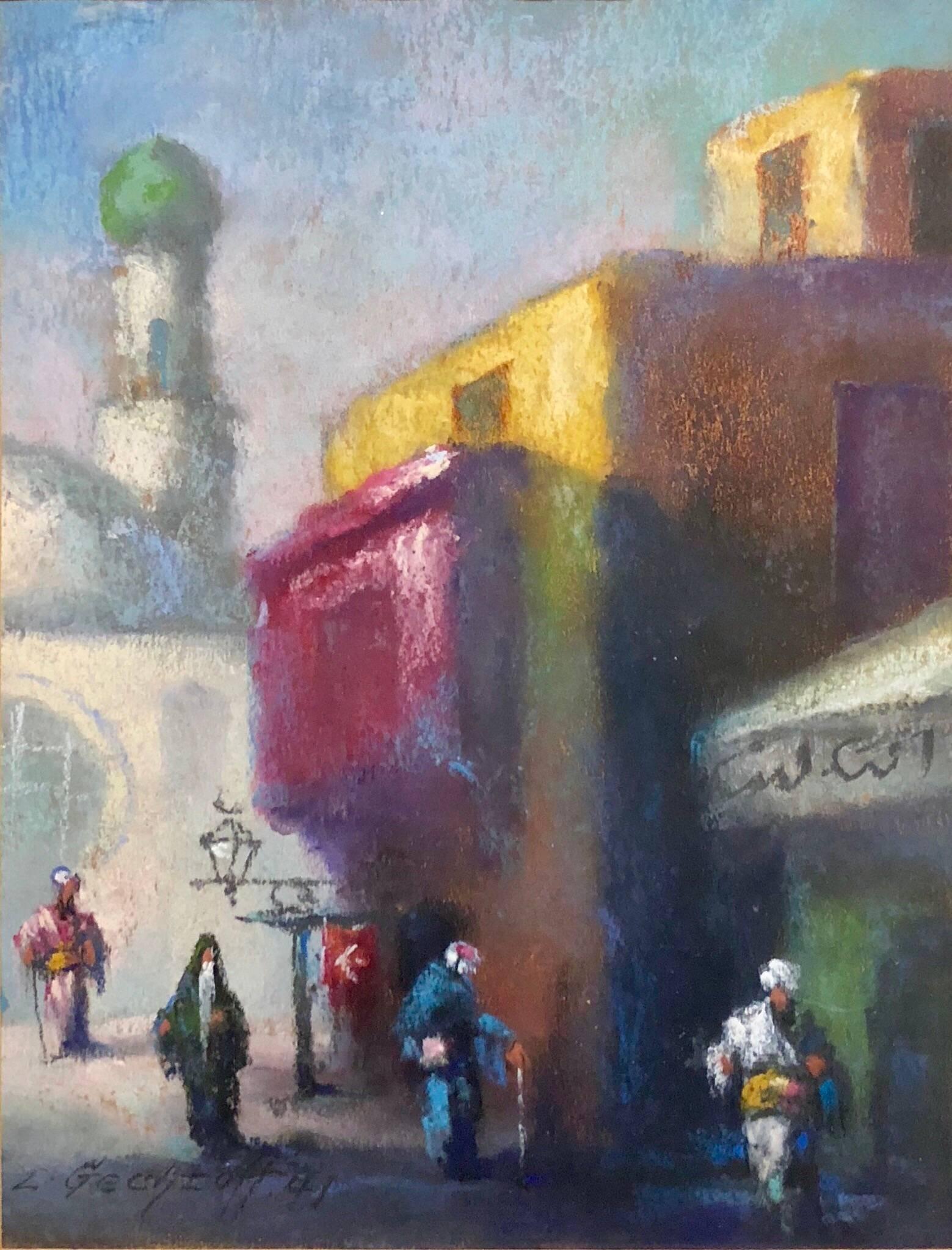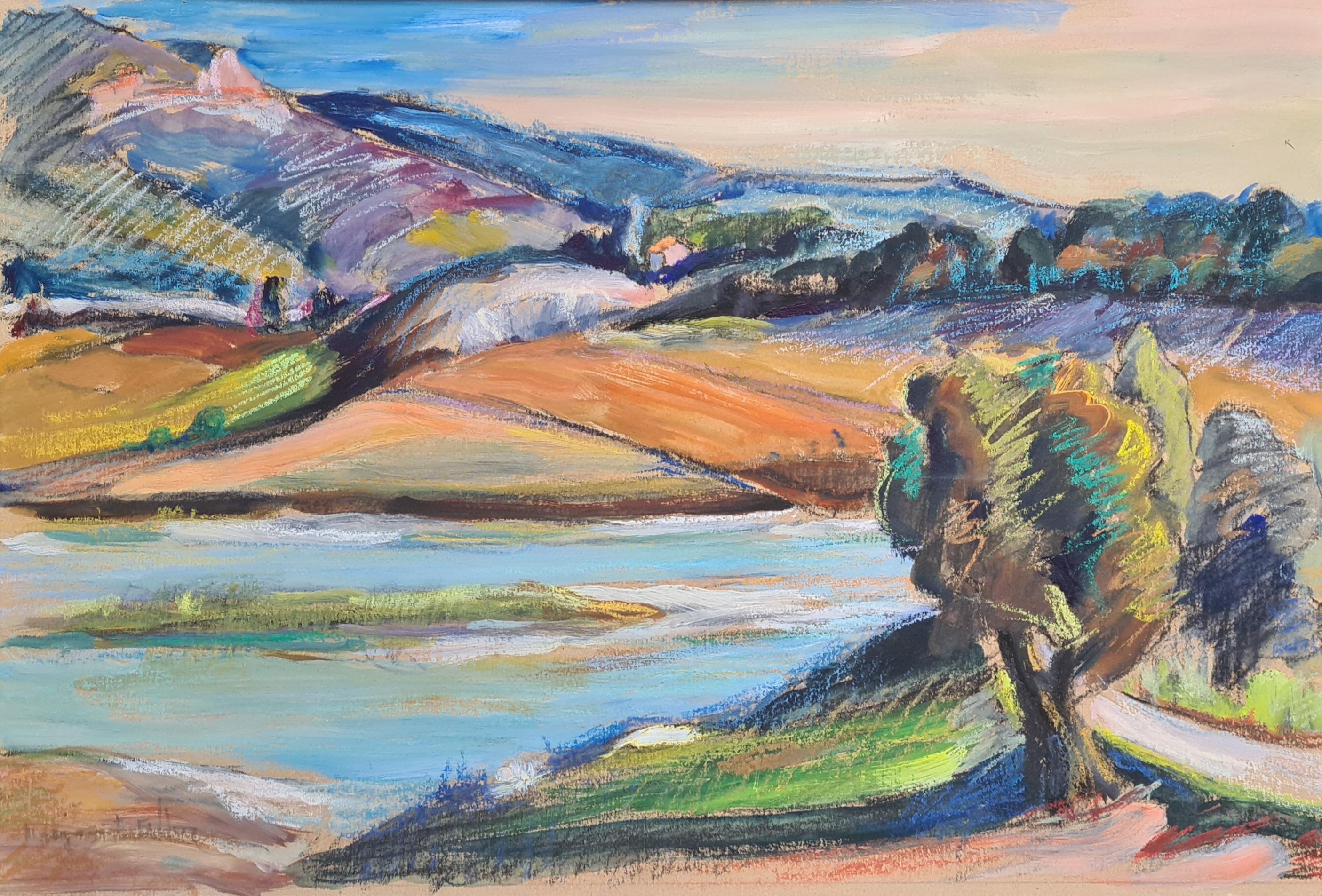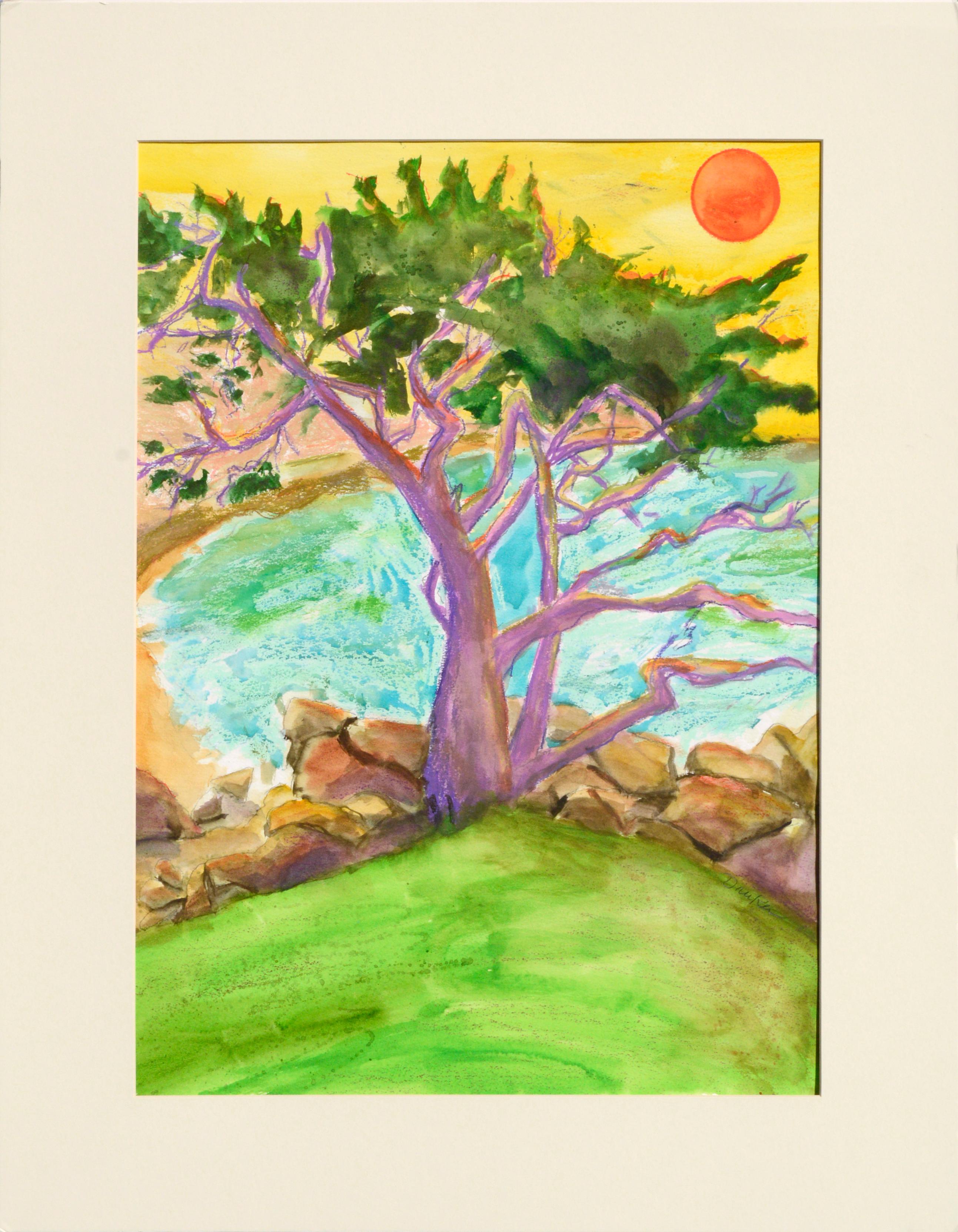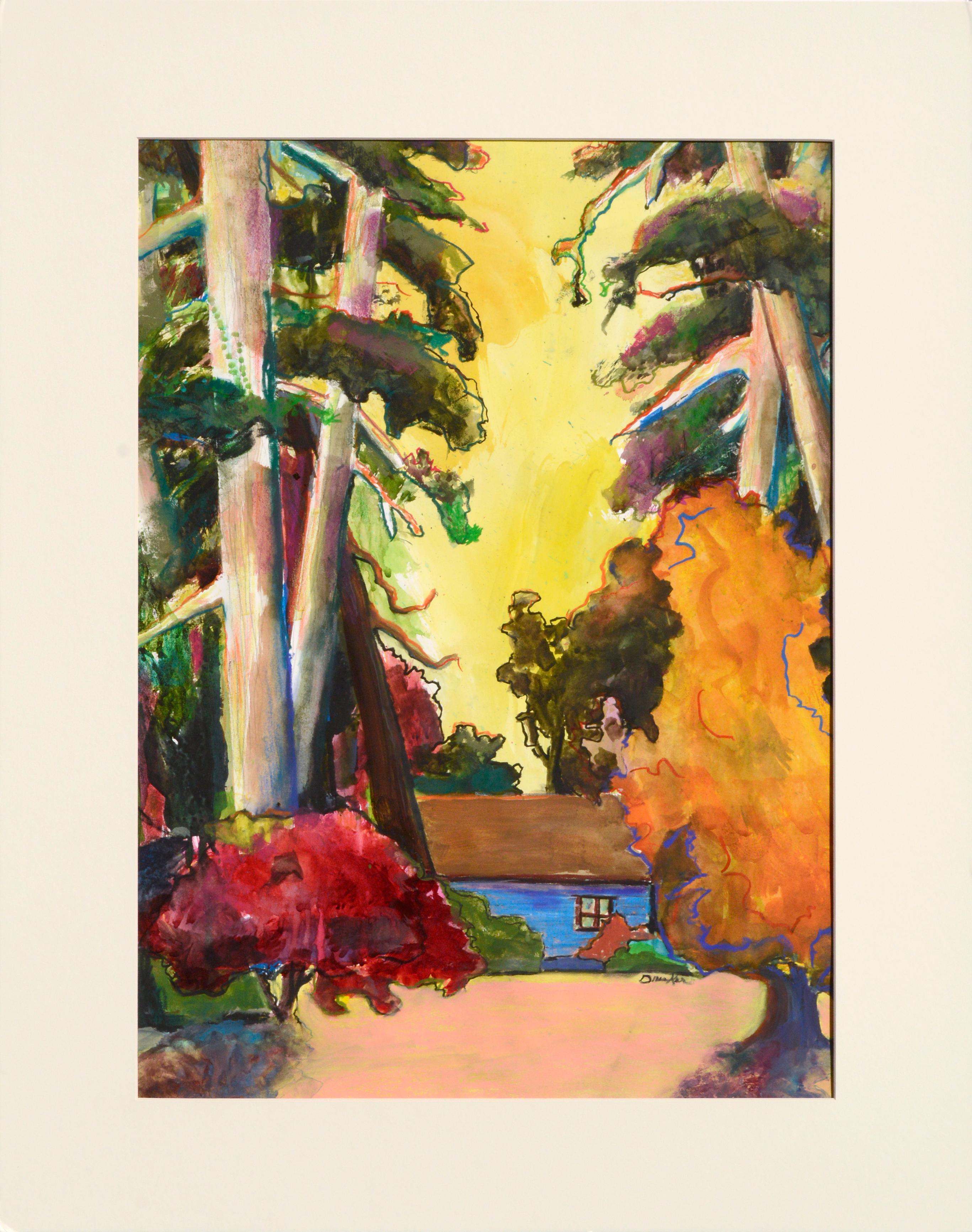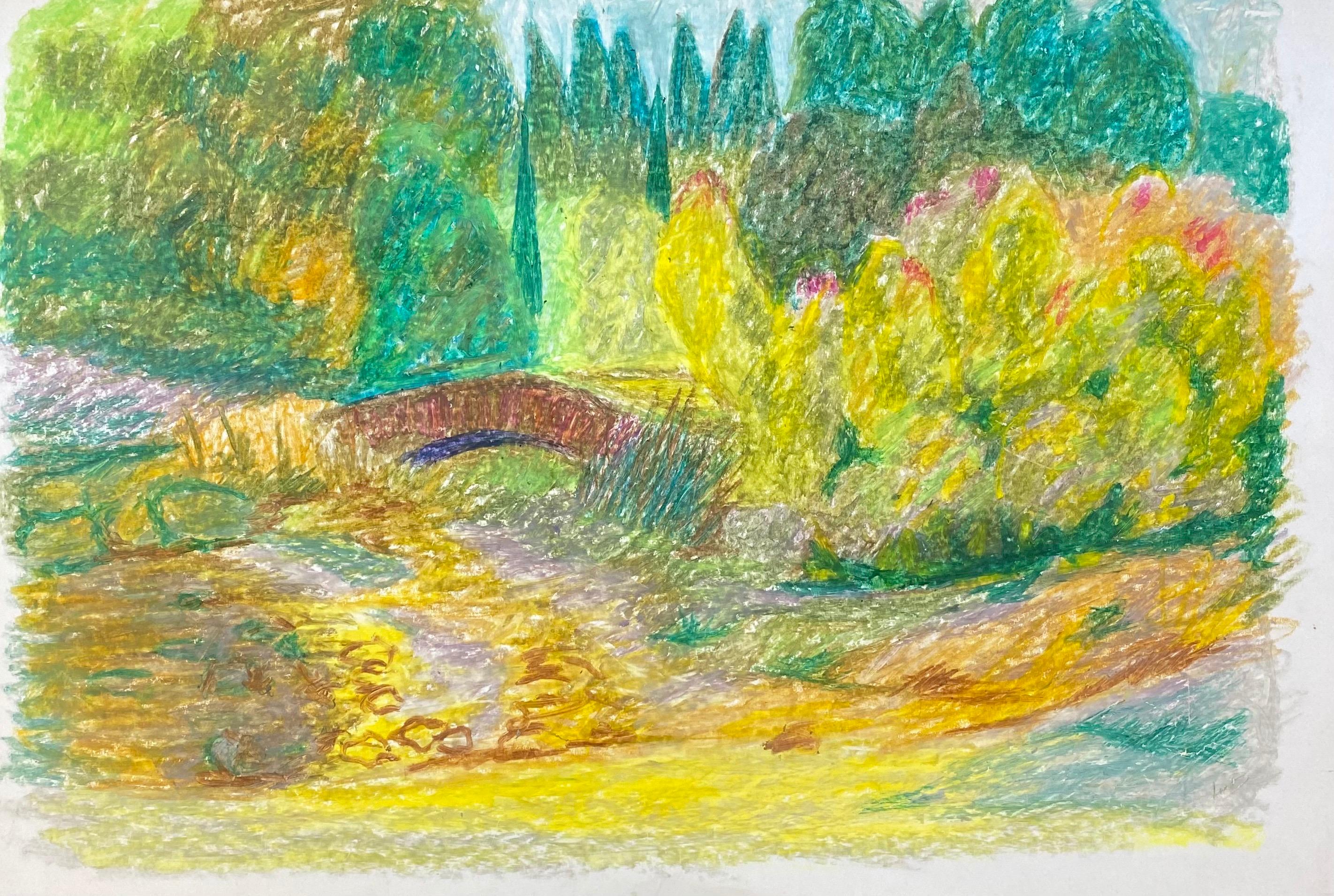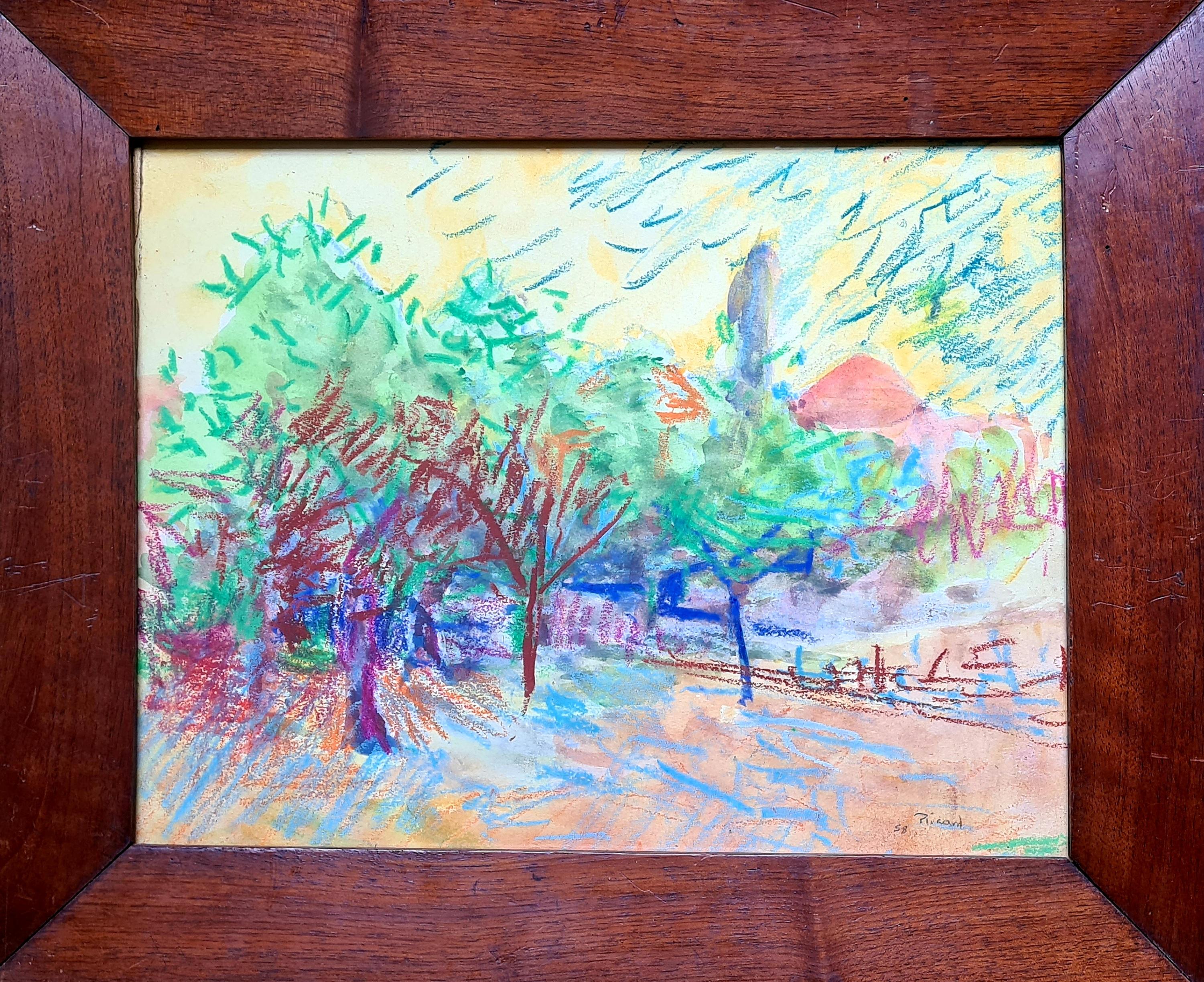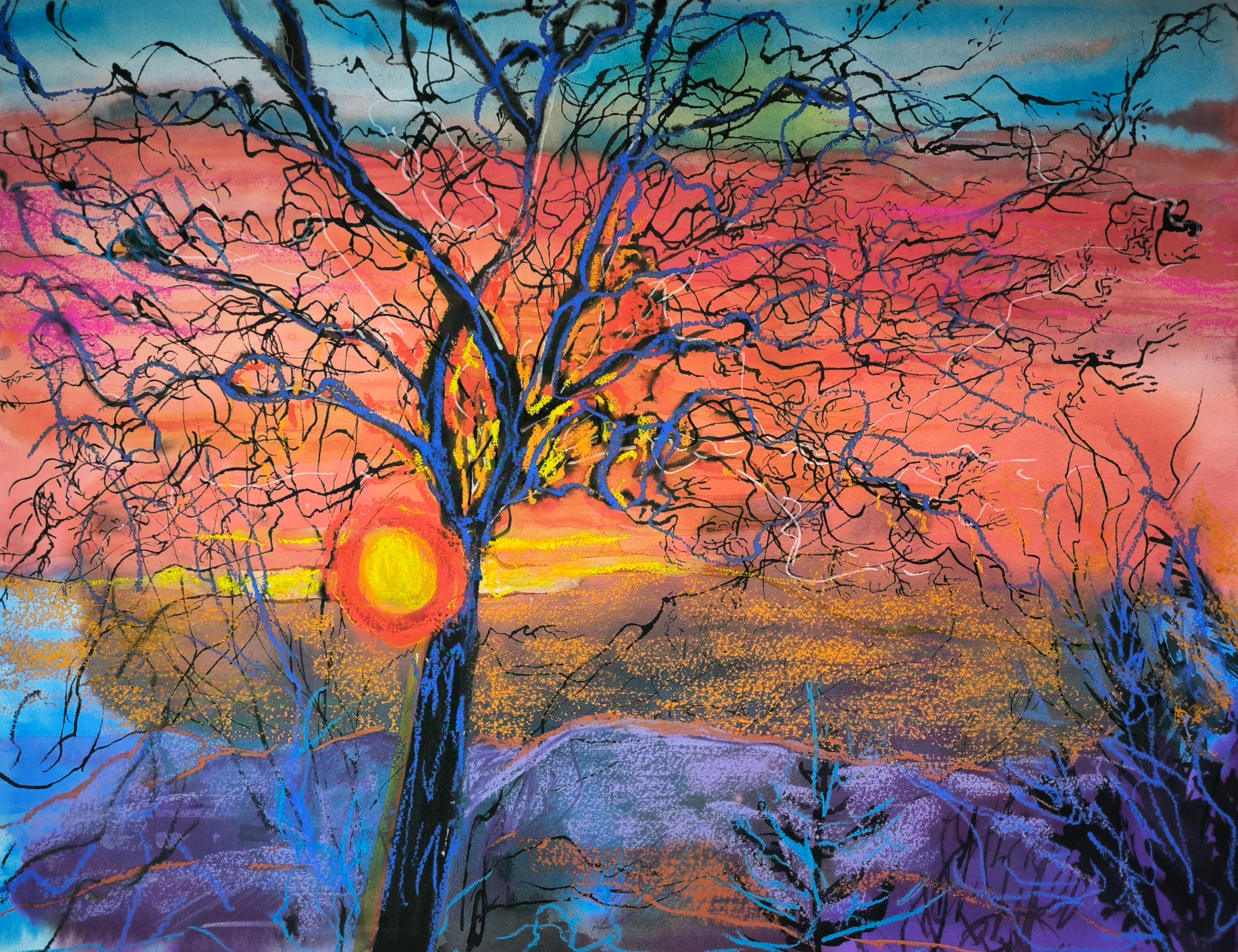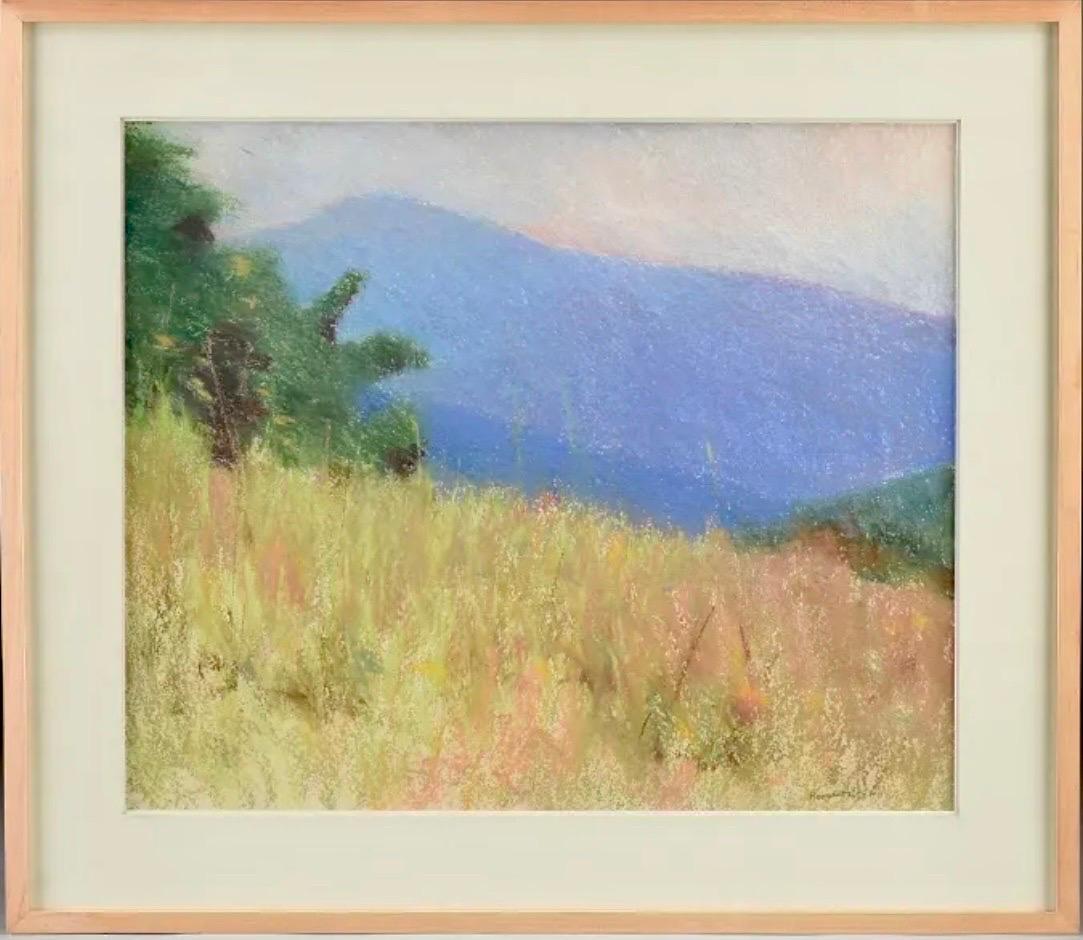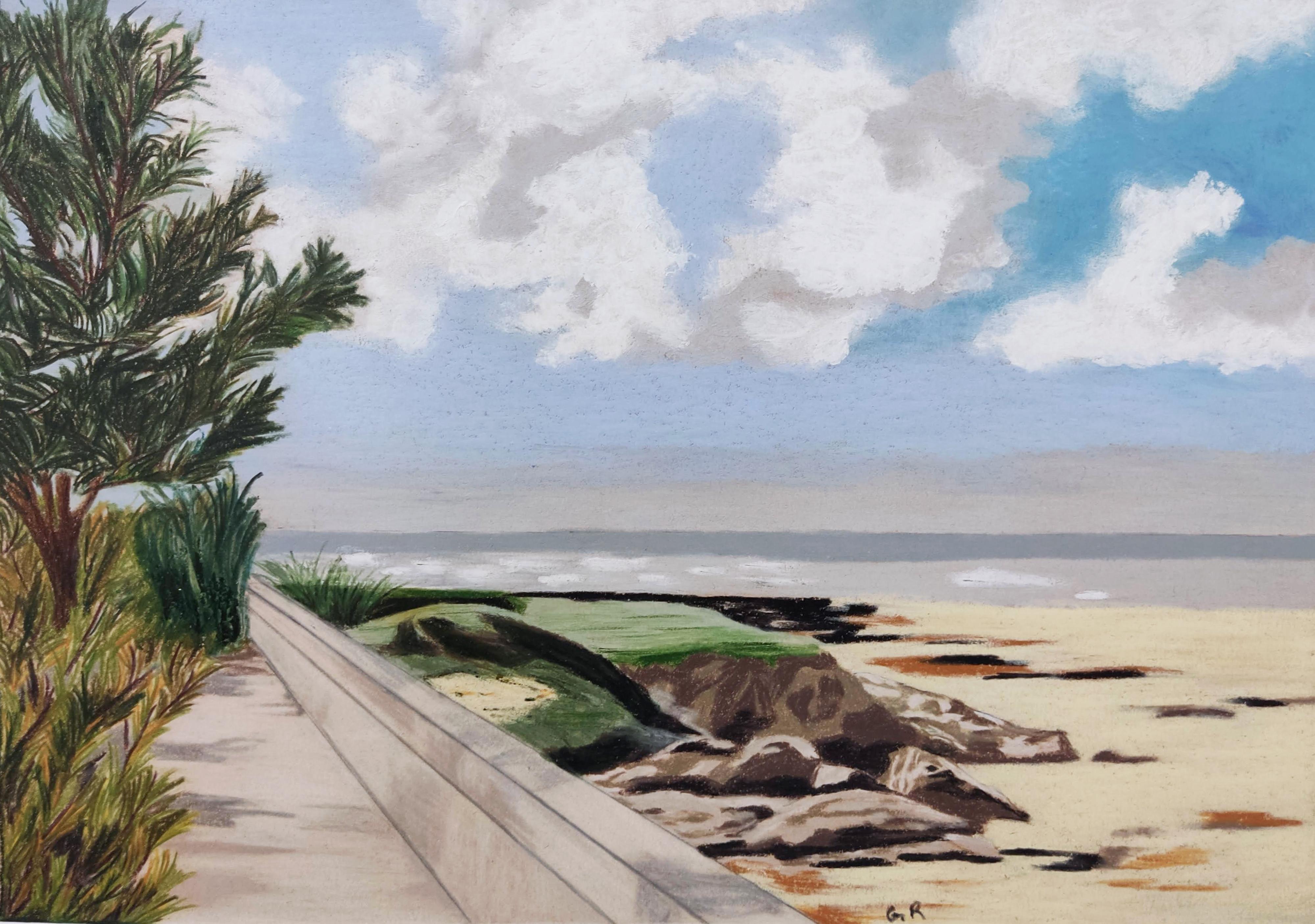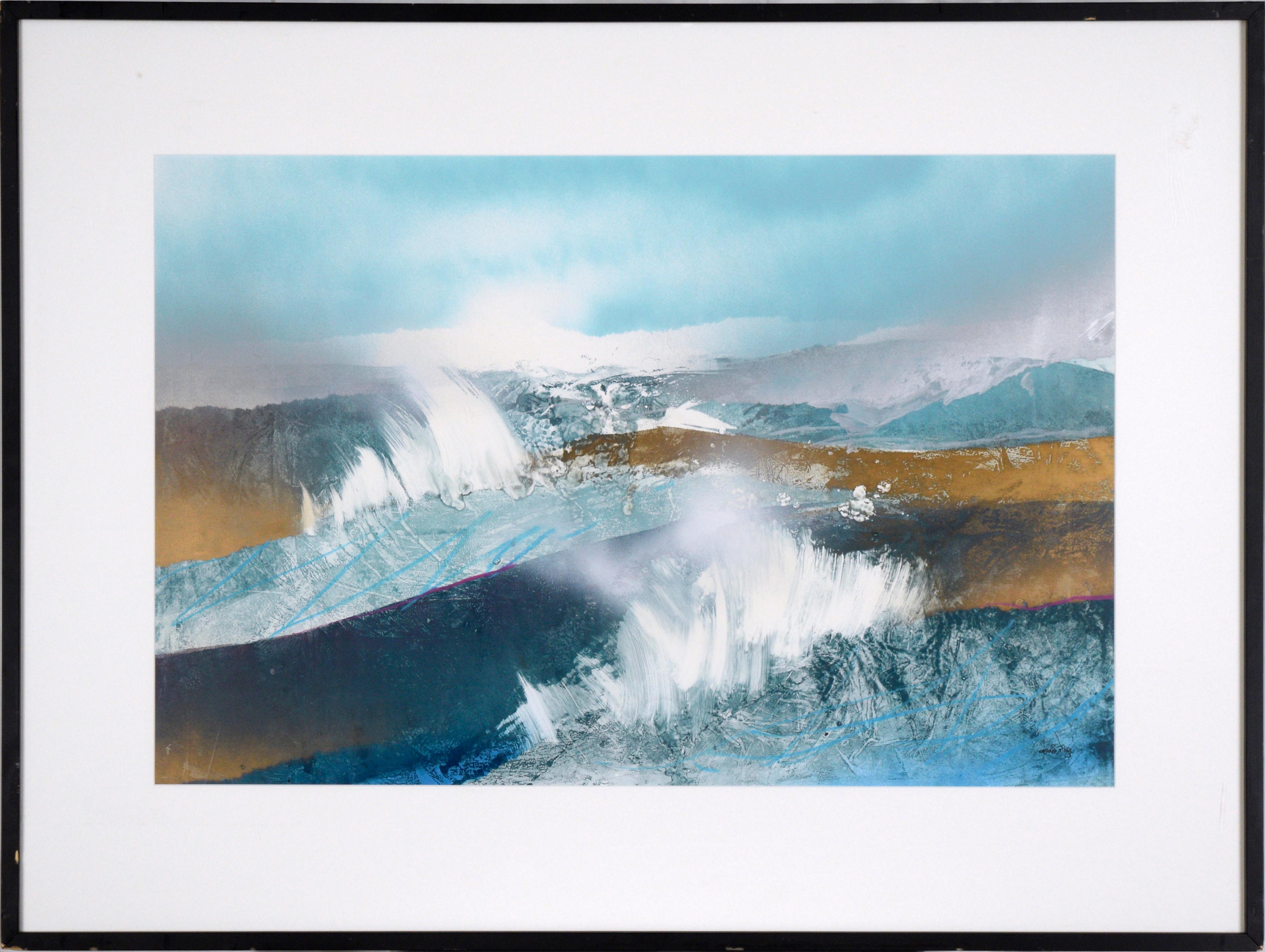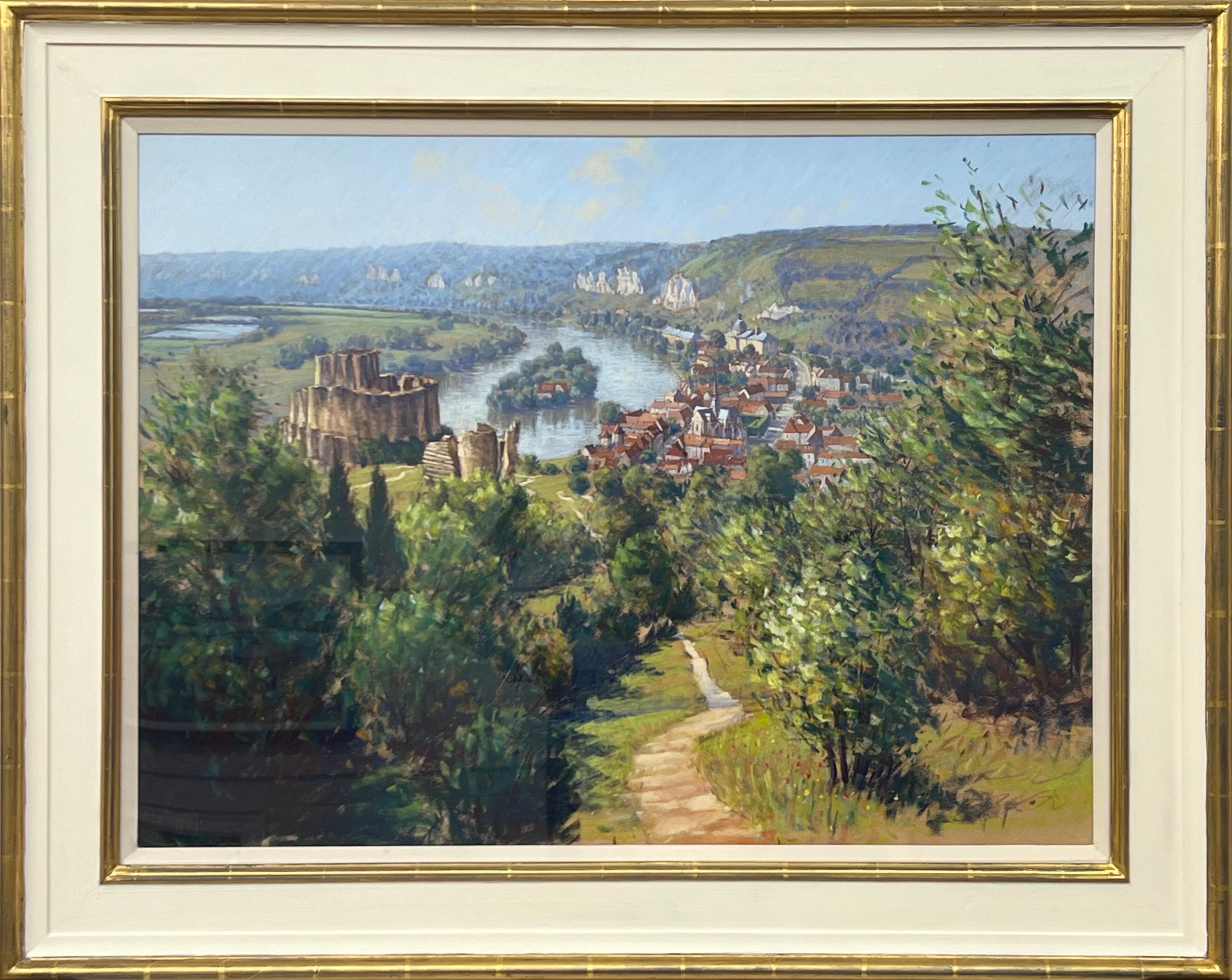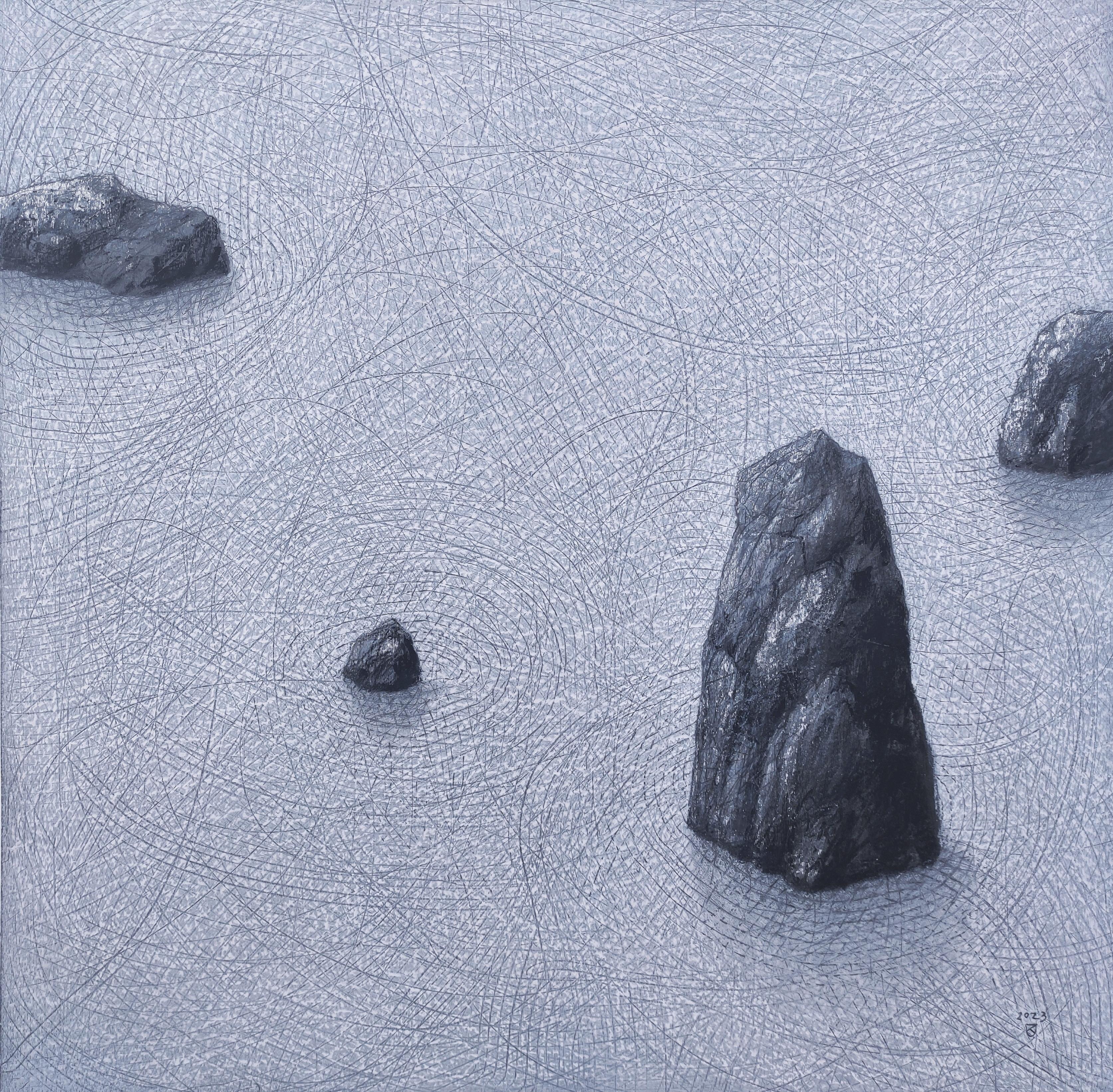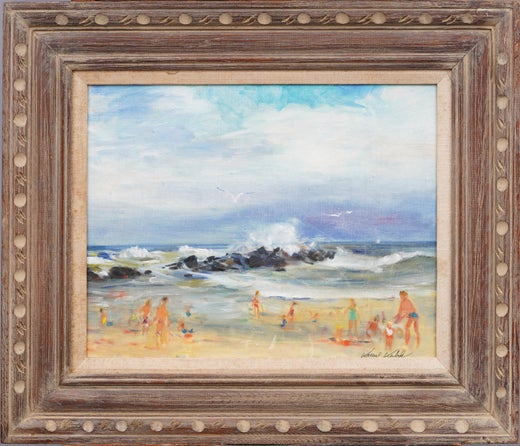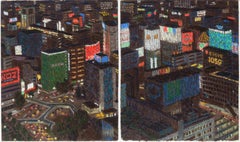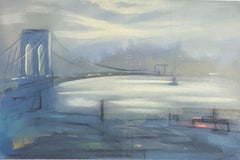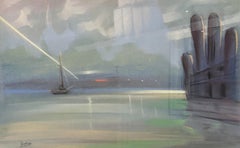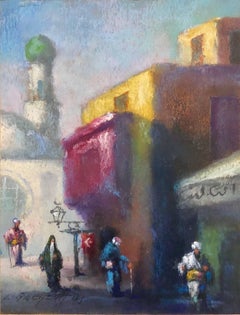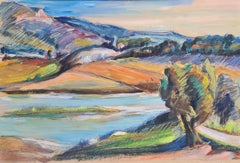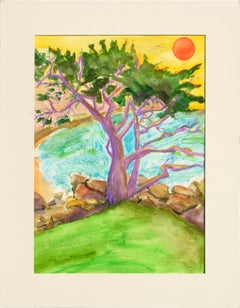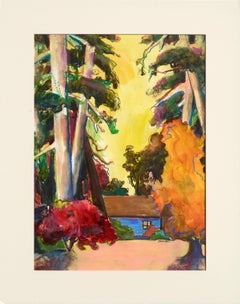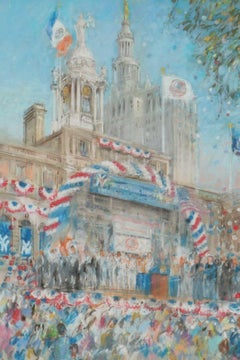
"New York Yankees World Series Celebration, " Kamil Kubik Baseball Street Parade
View Similar Items
Want more images or videos?
Request additional images or videos from the seller
1 of 8
Kamil Kubik"New York Yankees World Series Celebration, " Kamil Kubik Baseball Street Parade1998
1998
About the Item
- Creator:Kamil Kubik (1930, American, Czech)
- Creation Year:1998
- Dimensions:Height: 26 in (66.04 cm)Width: 19.5 in (49.53 cm)
- Medium:
- Movement & Style:
- Period:
- Condition:
- Gallery Location:New York, NY
- Reference Number:1stDibs: LU184129924152
Kamil Kubik
Kamil Kubik was born in Czechoslovakia in 1930 to an artistic family. He began his formal art training in Prague, but when the Communists seized power in 1949, he escaped, starting a long journey of study and work around the world. Kubik did set design in Australia and painted portraits in London and San Francisco. His works are owned by collectors on five continents, including the collections of Mrs. Lyndon B. Johnson, Mr. And Mrs. John V. Lindsay, Paul Mellon, Count de La Lanne-Mirrlees and Robert Sarnoff.
About the Seller
5.0
Platinum Seller
Premium sellers with a 4.7+ rating and 24-hour response times
Established in 2022
1stDibs seller since 2022
104 sales on 1stDibs
Authenticity Guarantee
In the unlikely event there’s an issue with an item’s authenticity, contact us within 1 year for a full refund. DetailsMoney-Back Guarantee
If your item is not as described, is damaged in transit, or does not arrive, contact us within 7 days for a full refund. Details24-Hour Cancellation
You have a 24-hour grace period in which to reconsider your purchase, with no questions asked.Vetted Professional Sellers
Our world-class sellers must adhere to strict standards for service and quality, maintaining the integrity of our listings.Price-Match Guarantee
If you find that a seller listed the same item for a lower price elsewhere, we’ll match it.Trusted Global Delivery
Our best-in-class carrier network provides specialized shipping options worldwide, including custom delivery.More From This Seller
View All"Gondolas at the Dock, Venice, Italy" Louis Wolchonok, Boats in the Harbor Scene
By Louis Wolchonok
Located in New York, NY
Louis Wolchonok (1898 - 1973)
Gondolas at the Dock, Venice, Italy, 1928
Watercolor on paper
Sight 18 x 23 1/2 inches
Signed and dated lower right
Louis Wolchonok was an author of ar...
Category
1920s Post-Impressionist Landscape Drawings and Watercolors
Materials
Paper, Watercolor
"Tokyo Diptych, " Yvonne Jacquette, Japanese Urban Cityscape Nocturnal Aerial
By Yvonne Jacquette
Located in New York, NY
Yvonne Jacquette (American, b. 1935)
Tokyo Diptych, 1985
Pastel on paper
Overall 17 1/4 x 28 1/2 inches
Signed lower center
Provenance:
Carey Ellis Company, Houston, Texas
Brooke Alexander, New York
Collection of an American Corporation
Exhibited:
New York, Brooke Alexander, Yvonne Jacquette: Tokyo Nightviews, April 5 - May 3, 1986, n.p., illustrated; this exhibition later traveled to Brunswick, Maine, Bowdoin College Museum of Art, Yvonne Jacquette: Tokyo Nightviews, June 27 - August 24, 1986.
Yvonne Jacquette has a preference for high places, a circling plane, a penthouse window, an aerie from which to watch the world. Her work has often depicted the city and man-made landscape from the vantage of angels. It is a privileged perspective, long loved by photographers, who were perhaps the first to recognize the geometric grandeur of the city below. That grandeur structures Jacquette's images but is not its full content. Her work attempts to resolve the visual and emotional pardoxes of the modern metropolis. Only from the tower is there the possibility of order and context. And unlaced beauty.
Jacquette first visited Japan in 1982. Nighttime Tokyo, its cars and crowds and canyons of loud Vegas neon, made a vivid and bewildering impression on her. The neon signs, pulsing, scaling the walls of high rises, fascinated the artist, "like Times Square spread over miles." Her fascination was equal parts marvel, confusion, and curiosity—the sparks of art. She returned to Tokyo in May of 1985, choosing hotel rooms with expansive vistas. From these views Jacquette excerpted images for a series of pastel night scenes. The basic forms and colors of each drawing were blocked in during night sessions by the window. She worked in the dark, selecting colors by flashlight. In daylight, she sharpened the geometry and corrected ambiguous passages. She refined the drawings further in the studio until the images read clearly. Photographic correctness was not important. The finished drawings are complete statements, not simply preparatory sketches for paintings. They have the authority of expert witness. In clear, discreet jots of pastel they record the performance of seeing, each touch of color attesting to a moment's close scrutiny.
Yvonne Jacquette was born on December 15, 1934 in Pittsburgh, Pennsylvania and grew up in Stamford, Connecticut. She attended the Rhode Island School of Design, Providence from 1952 to 1955, when she moved to New York City. Her late husband was photographer Rudy Burckhardt, and the couple were part of a circle of artist friends that included Fairfield Porter, Alex Katz, Red Grooms, and Mimi Gross. She continues to live and work in New York City, as well as in Searsmont, Maine.
A flight to San Diego in 1969 sparked Jacquette’s interest in aerial views, after which she began flying in commercial airliners to study cloud formations and weather patterns. She soon started sketching and painting the landscape as seen from above, beginning a process that has developed into a defining element of her art. Her first nocturnal painting...
Category
1980s American Modern Landscape Drawings and Watercolors
Materials
Paper, Pastel
"New York City Harbor (Brooklyn Bridge), " Leon Dolice, East River, Mid-Century
By Leon Dolice
Located in New York, NY
Leon Dolice (1892 - 1960)
New York Harbor (Brooklyn Bridge), circa 1930-40
Pastel on paper
12 x 19 inches
Signed lower right
Provenance:
Spanierman Gallery, New York
The romantic b...
Category
1930s American Modern Landscape Drawings and Watercolors
Materials
Paper, Pastel
"New York City Harbor" Leon Dolice, Downtown Skyline, East and Hudson River
By Leon Dolice
Located in New York, NY
Leon Dolice (1892 - 1960)
New York Harbor Skyline at Twilight (Searching), circa 1930-40
Pastel on paper
12 x 19 inches
Signed lower left
Provenance:
Spanierman Gallery, New York
The romantic backdrop of Vienna at the turn of the century had a life-long influence upon the young man who was someday to be spoken of as showing promise of becoming "one of the greatest etchers of all time". Leon Dolice, born in Vienna on August 14, 1892, even as a young boy, preferred the lure of painting to the scholastic studies which his early years had expected of him. His father was a machinist, which exposed the boy to welding and metal crafts.
However, his interest in art led him to abandon a secure future in the family business, and he spent most of his late teens and early twenties traveling through the capital cities of Europe studying the works of the Masters.
As with many itinerant artists, he made his way in a variety of fashions metalworker, chef, designer somehow always managing to give vent to his creative instincts. Lured by the adventure of crossing the great Atlantic and by the freedoms of the New World, he came to America in 1920. There he was greeted by the turbulence of New York in the Roaring Twenties. Finding a retreat in the European Bohemianism of Greenwich Village, he picked the streets of this landmark neighborhood as his first subjects.
With the encouragement of new found friends and artists such as George Luks and Herb Roth, he soon ventured out and devoted all his time to chronicling the architecture, back streets, dock scenes and other nostalgia that was fast disappearing from the face of Manhattan, mainly in copperplate etchings. A favorite subject for him was the Third Avenue El near one of his New York City studios on Third Avenue. He won accolades for his work, and although he traveled the East Coast recording landmarks in other cities including Washington DC, Baltimore, Chicago and Philadelphia, he always returned to his new home Manhattan.
A decline in popular favor for etchings led him to put aside his plates in the late 1930's and devote some ten years to pastels, linocuts and painting. His subject matter was almost exclusively New York City street scenes, but figurative works, country scenes and even experiments with Abstract Expressionism at the height of its new found favor in the 1940's punctuated his career.
In 1953, after learning of the forthcoming demise of the Third Avenue El, in the shadow of which he had maintained his studio for over a decade, he once again took to his plates and press and created a final series of Third Avenue and or other New York City landmarks that were then threatened with extinction. His work brings to light aspects of nostalgic New York that survives today only in small part, whether in architecture or in spirit.
Dolice's works are in a number of notable museums and private collections, including the Museum of the City of New York; The New York Public Library Print Collection; The New York Historical Society; Georgetown University Lauinger Library; The Print Club of Philadelphia and others. In the past few years, his work has been exhibited at Hofstra Museum, Long Island, NY; with the Montauk...
Category
1930s American Modern Landscape Drawings and Watercolors
Materials
Paper, Pastel
"Hydrangeas, " Walter Inglis Anderson, Mississippi Southern Illustrator, Flowers
Located in New York, NY
Walter Anderson ( American, 1903 - 1965)
Hydrangeas, circa 1950
Mixed media on paper
11 x 8 1/2 inches
Provenance:
Luise Ross Gallery, New York
Private Collection, New Jersey
Acquired from the estate of the above, 2021
Walter Anderson firmly believed that quality art was an important part of life and should be made available to everyone. As he said, "There should be simple, good decorations, to be sold at prices to rival the five-and-ten." Noticing that only poor quality art was available in stores and little was available for children, he resolved to make art which could be reproduced easily and sell inexpensively — linoleum block prints. This technique enabled him to provide affordable, quality art.
The technique of linoleum block printing is a simple concept; however, it requires much skill and talent to actually produce memorable art. Anderson purchased surplus "battleship linoleum," thicker than ordinary linoleum with a burlap backing for better support, to create his blocks. During the mid-1940s, he created almost 300 linocuts working in the attic of the sea-side plantation house, Oldfields, his wife's family home in Gautier. Masses of linoleum chips accumulated at the foot of the attic stairs as he often worked night and day. He began with sketching out a design directly on the linoleum. Once he had carved the image into the surface, he used the back of faded, surplus stock wallpaper that a friend sent him, laying long strips on top of the inked linoleum. A roller made of sewer pipe filled with sand served as his press. When the print was completed, he often colored it by hand with bold strokes and vivid colors. The prints were sold at Shearwater Pottery, the family business, for a mere dollar a foot.
But "what about a well-designed fairy tale for a child's room?" he asked himself. Since there was a lack of affordable art for children, much of his work with linoleum blocks focused on subjects for children. He depicted fables and fairy tales ranging from Arabian Nights, to Germany and the Grimm Brothers' Rapunzel, to the French story of The White Cat, to the Greek tales such as Europa and the Bull, and to tales from China, India, and other cultures. Anderson also created "mini" books featuring the alphabet and Robinson Cat. The blocks are not only alive with the story being depicted, but they are also filled with designs taken from Best-Maugard's Method for Creative Design. Swirls, half-circles and zig-zag lines fill every available space on the linoleum block making them come alive and capture their audience.
But fairy tales, children's verses and the "mini" books, consisting of about 90 blocks, were not the sole subject of Anderson's linoleum block prints. In total, he created approximately 300 linoleum blocks with subjects ranging from coastal flora and fauna, coastal animals, and sports and other coastal activities. Anderson even created linoleum blocks to be used to print tablecloths and clothing, some worn by his own children. Color and subjects of the linoleum block prints were not the only things that got them noticed.
In 1945 when Anderson was creating these prints, the standard size of linoleum block prints was only 12 by 18 inches. These small dimensions were due to the common size of the paper available and the restrictions made by national competitions. Since Anderson used wallpaper...
Category
Mid-20th Century American Modern Landscape Paintings
Materials
Paper, Crayon
"Train Station, " Max Kuehne, Industrial City Scene, American Impressionism
By Max Kuehne
Located in New York, NY
Max Kuehne (1880 - 1968)
Train Station, circa 1910
Watercolor on paper
8 1/4 x 10 1/4 inches
Signed lower right
Provenance:
Private Collection, Illinois
Max Kuehne was born in Halle, Germany on November 7, 1880. During his adolescence the family immigrated to America and settled in Flushing, New York. As a young man, Max was active in rowing events, bicycle racing, swimming and sailing. After experimenting with various occupations, Kuehne decided to study art, which led him to William Merritt Chase's famous school in New York; he was trained by Chase himself, then by Kenneth Hayes Miller. Chase was at the peak of his career, and his portraits were especially in demand. Kuehne would have profited from Chase's invaluable lessons in technique, as well as his inspirational personality. Miller, only four years older than Kuehne, was another of the many artists to benefit from Chase's teachings. Even though Miller still would have been under the spell of Chase upon Kuehne's arrival, he was already experimenting with an aestheticism that went beyond Chase's realism and virtuosity of the brush. Later Miller developed a style dependent upon volumetric figures that recall Italian Renaissance prototypes.
Kuehne moved from Miller to Robert Henri in 1909. Rockwell Kent, who also studied under Chase, Miller, and Henri, expressed what he felt were their respective contributions: "As Chase had taught us to use our eyes, and Henri to enlist our hearts, Miller called on us to use our heads." (Rockwell Kent, It's Me O Lord: The Autobiography of Rockwell Kent. New York: Dodd, Mead and Co., 1955, p. 83). Henri prompted Kuehne to search out the unvarnished realities of urban living; a notable portion of Henri's stylistic formula was incorporated into his work.
Having received such a thorough foundation in art, Kuehne spent a year in Europe's major art museums to study techniques of the old masters. His son Richard named Ernest Lawson as one of Max Kuehne's European traveling companions. In 1911 Kuehne moved to New York where he maintained a studio and painted everyday scenes around him, using the rather Manet-like, dark palette of Henri.
A trip to Gloucester during the following summer engendered a brighter palette. In the words of Gallatin (1924, p. 60), during that summer Kuehne "executed some of his most successful pictures, paintings full of sunlight . . . revealing the fact that he was becoming a colorist of considerable distinction." Kuehne was away in England the year of the Armory Show (1913), where he worked on powerful, painterly seascapes on the rocky shores of Cornwall. Possibly inspired by Henri - who had discovered Madrid in 1900 then took classes there in 1906, 1908 and 1912 - Kuehne visited Spain in 1914; in all, he would spend three years there, maintaining a studio in Granada. He developed his own impressionism and a greater simplicity while in Spain, under the influence of the brilliant Mediterranean light. George Bellows convinced Kuehne to spend the summer of 1919 in Rockport, Maine (near Camden). The influence of Bellows was more than casual; he would have intensified Kuehne's commitment to paint life "in the raw" around him.
After another brief trip to Spain in 1920, Kuehne went to the other Rockport (Cape Ann, Massachusetts) where he was accepted as a member of the vigorous art colony, spearheaded by Aldro T. Hibbard. Rockport's picturesque ambiance fulfilled the needs of an artist-sailor: as a writer in the Gloucester Daily Times explained, "Max Kuehne came to Rockport to paint, but he stayed to sail." The 1920s was a boom decade for Cape Ann, as it was for the rest of the nation. Kuehne's studio in Rockport was formerly occupied by Jonas Lie.
Kuehne spent the summer of 1923 in Paris, where in July, André Breton started a brawl as the curtain went up on a play by his rival Tristan Tzara; the event signified the demise of the Dada movement. Kuehne could not relate to this avant-garde art but was apparently influenced by more traditional painters — the Fauves, Nabis, and painters such as Bonnard. Gallatin perceived a looser handling and more brilliant color in the pictures Kuehne brought back to the States in the fall. In 1926, Kuehne won the First Honorable Mention at the Carnegie Institute, and he re-exhibited there, for example, in 1937 (Before the Wind). Besides painting, Kuehne did sculpture, decorative screens, and furniture work with carved and gilded molding. In addition, he designed and carved his own frames, and John Taylor Adams encouraged Kuehne to execute etchings. Through his talents in all these media he was able to survive the Depression, and during the 1940s and 1950s these activities almost eclipsed his easel painting. In later years, Kuehne's landscapes and still-lifes show the influence of Cézanne and Bonnard, and his style changed radically.
Max Kuehne died in 1968. He exhibited his work at the National Academy of Design, the Art Institute of Chicago, the Carnegie Institute in Pittsburgh, the Memorial Art Gallery of the University of Rochester, and in various New York City galleries. Kuehne's works are in the following public collections: the Detroit Institute of Arts (Marine Headland), the Whitney Museum (Diamond Hill...
Category
1910s American Impressionist Landscape Drawings and Watercolors
Materials
Paper, Watercolor
You May Also Like
Orientalist Cairo Market Street Scene, Middle Eastern Bazaar
By Leonid Gechtoff
Located in Surfside, FL
In original period wormwood frame. Leonid Gechtoff was born in Odessa, Ukraine, then a part of Imperial Russia, in 1883, He received his art school training in Russia, where he proba...
Category
Early 20th Century Post-Impressionist Landscape Paintings
Materials
Paper, Oil Pastel
Fauvist View of A French River and Mountain Landscape, The Verdon, Provence.
Located in Cotignac, FR
A mid century, pastel on card, Fauvist landscape by Marguerite Allar. Signed bottom left, annotated and titled to the back board and presented in plain wood frame.
A colourful view ...
Category
Mid-20th Century Post-Impressionist Landscape Paintings
Materials
Oil Pastel, Pastel, Board
Purple Cypress Tree - Coastal Fauvist Vertical Landscape
By Karen Druker
Located in Soquel, CA
Brightly colored Fauvist coastal landscape of a vivid purple cypress tree at the edge of the water, under a bright yellow sky and orange sun by Karen Druker (American, 1945). Signed ...
Category
21st Century and Contemporary Fauvist Landscape Drawings and Watercolors
Materials
Paper, Pastel, Watercolor, Pencil
The Blue Cabin - Vertical Landscape
By Karen Druker
Located in Soquel, CA
Brightly colored landscape of a cabin in the woods by Karen Druker (American, 1945). Signed "Druker" in the lower right corner. Presented in a cream mat. No frame. Image size: 30"H x...
Category
21st Century and Contemporary Fauvist Landscape Drawings and Watercolors
Materials
Paper, Pastel, Watercolor
1940's Provence French Landscape - Post Impressionist artist
By Louis Bellon
Located in Cirencester, Gloucestershire
Provencal Landscape
by Louis Bellon (French 1908-1998)
From a batch of similar work where most were dated 1942-1947
wax crayon painting on paper, unframed
measurements: 12 x 17.5 in...
Category
Mid-20th Century Post-Impressionist Landscape Paintings
Materials
Wax Crayon
$746 Sale Price
20% Off
Mid 20th Century Fauvist Impressionist Landscape.
Located in Cotignac, FR
A French Impressionist Fauvist Colour-Field watercolour and pastel on paper landscape by G Ricard. The painting is signed and dated bottom right. Presented in a fine period wood fram...
Category
Late 20th Century Fauvist Landscape Paintings
Materials
Pastel, Watercolor
Recently Viewed
View AllMore Ways To Browse
Robert Rivera
Mrs Paul Mellon
Jet Martinez
Letterpress Vintage
Lyons Antique Prints
Miro Lithograph Black And White
Nice France Posters
Primitive Free Form
S Ida
Sacred Heart Vintage
Sea Bird Sculpture
Seven Species
Space Age Cat
Spanish Canvas 17th
Story Clark
Vintage Warbirds
1970s Printed Mirror
Andy Warhol Santa
